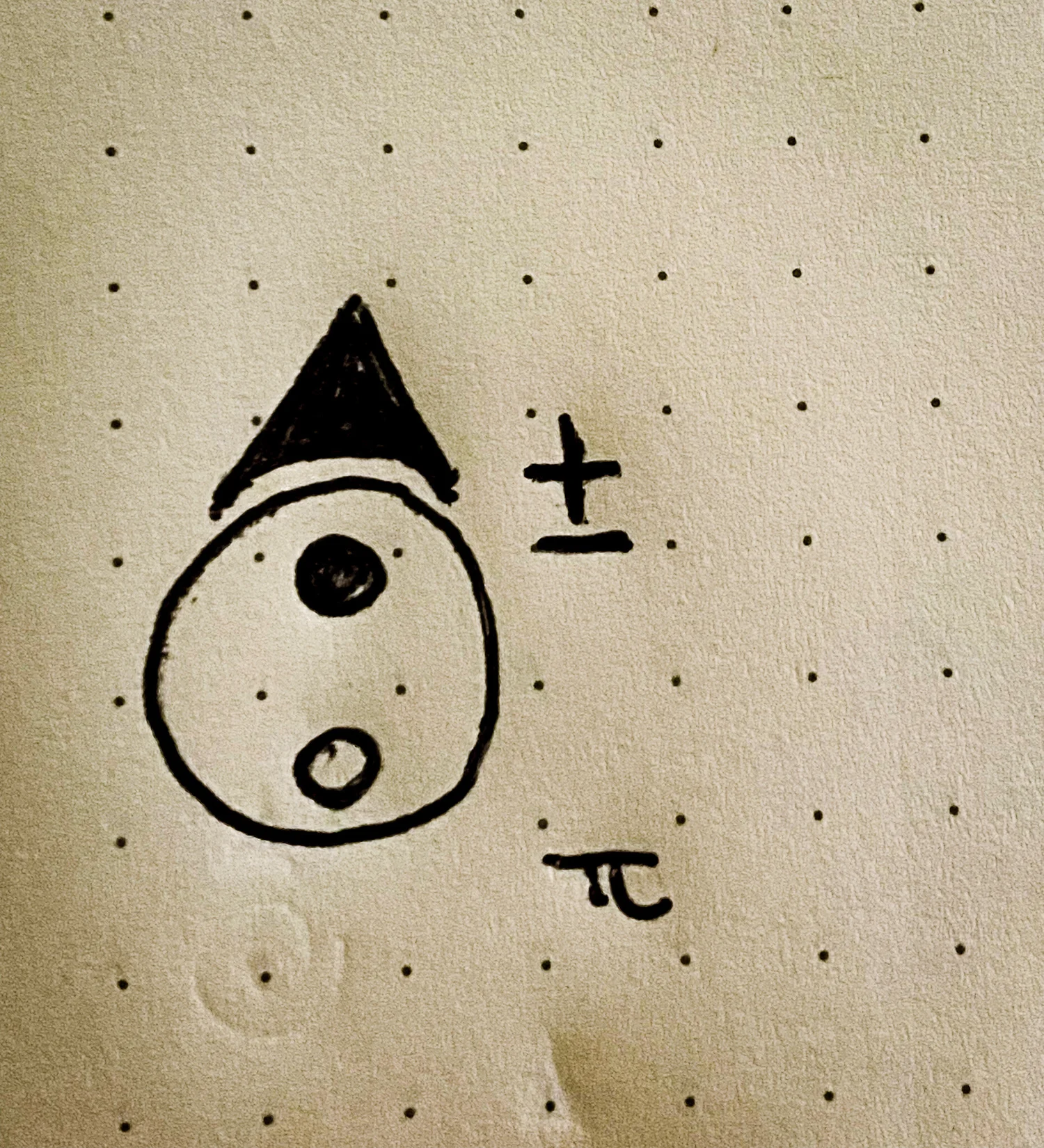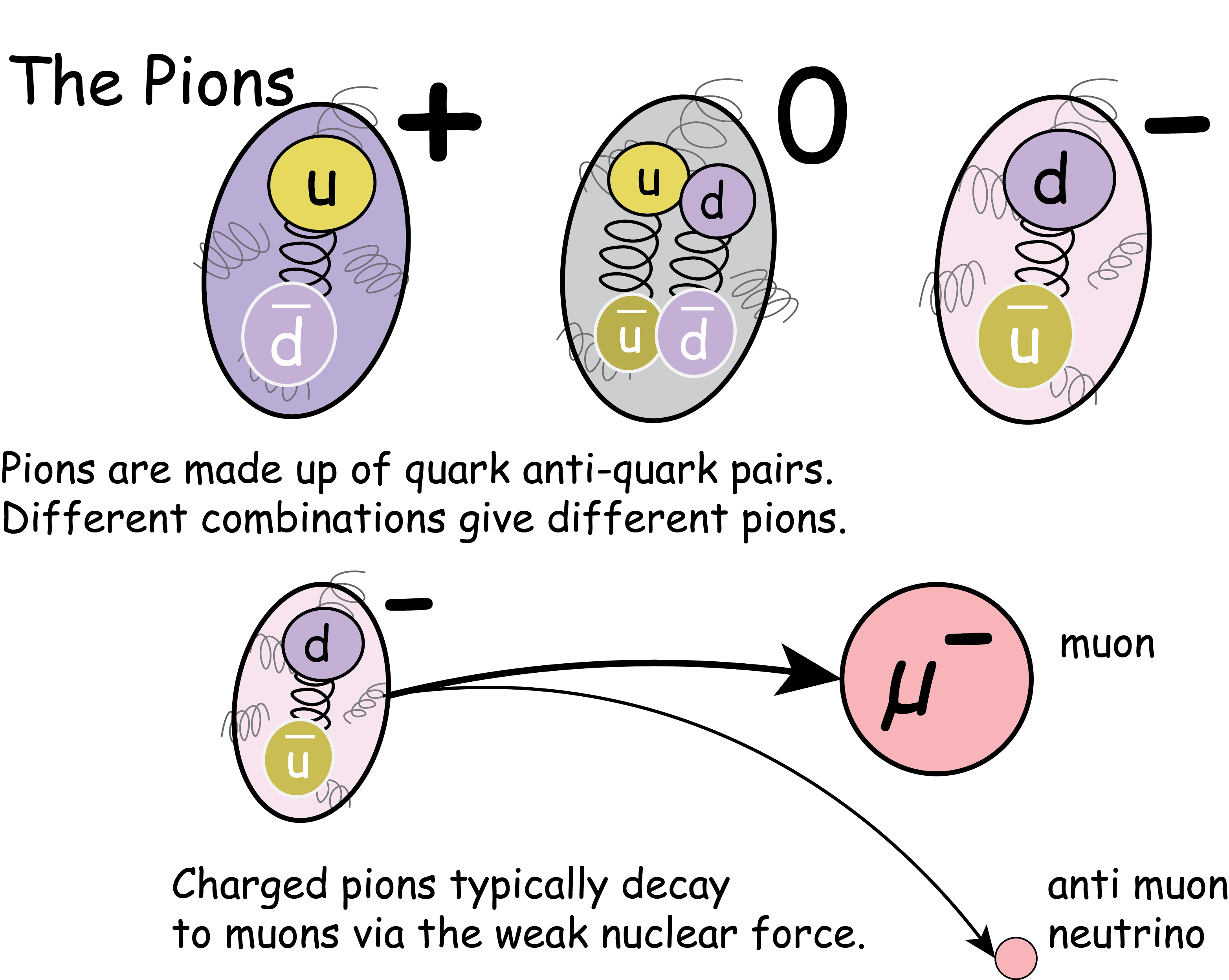
The Charged Pions
Quarks make up more than big, triplet particles like protons and neutrons. Sometimes they come in pairs. A pair of up and down down quarks is called a pion.There are three kinds of pions: π+,π- and π0. Compared to the proton, they’re quite small and a little quirky. They’re certainly unstable. Today we’ll talk about those charged pions, π±.
As you might expect from their name, π+ and π- are both electrically charged. They have equal and opposite charges. In fact, they’re opposite in almost every capacity. They're antiparticle partners.
Like the proton, pions are mostly comprised of nuclear goo. Unlike the proton, that goo surrounds only two quarks. Or, really, a quark/antiquark pair. A π+ has an up quark together with an anti down quark. That gives is an electric charge of 23 plus 13. That is to say, π+ has exactly the same charge as the proton. Being the antiparticle, π- is made up of a down quark, with an anti up quark. And of course all that nuclear goo. Its electric charge is precisely the opposite.
The charged pions have a mass of 139.6 MeV, making them just a tiny bit heavier than the muon. They are unstable particles, and given their mass typically decay into such muon, emitting a neutrino in the process. The muon, of course, is also unstable. It too decays to an electron and a pair of neutrinos. That’s pretty typical. Pion to muon to electron. A π+ will decay to an antimuon, who has a positive charge, and an antimuon decays to a positron. Again, typical.π- to antimuon to positron.
When cosmic rays smash into the molecules of the upper atmosphere, creating the showers of muons we deal with on a day to day basis, pions are the first on the scene. They're some of the first particles produced, and they don't have around for too long. Charged pions decay within about 30 nanoseconds.
Figure: The Pions

The pions are made up of pairs of quarks, unlike the proton that is made up of three. Pions decay into leptons like the muon.
Pions belong to a class of nuclear particles called mesons, which were originally thought up by Hideki Yukawa way back in 1934. To some extent, the play the role of communicating between the protons and neutrons. In that way, they are partially responsible for the residual nuclear force that binds atomic nuclei together. You can kind of think of them like photons, only for the nuclear force.
Occasionally a bunch of pions are created together, and you can see little pion atoms - pionium - where pi plus and pi minus orbit each other for a short time. Curiously, the pionium atom typically decays not to π+ or π+, but to a pair of π0’s. This is a kind of of matter/antimatter annihilation. Less frequently, pionium annihilates into a pair of photons.